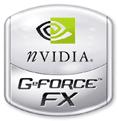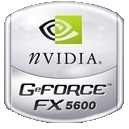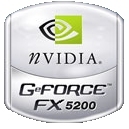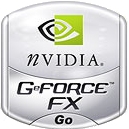





 NV30/31/34 - November 18, 2002
NV30/31/34 - November 18, 2002
The FX is a failed product. Although it has interesting abilities, and a serious performance boost over the GF4 Ti series, it is too late to matter. nVidia has been leapfrogged by ATI, who beat them to the high ground with their Radeon 9500 Pro series. To make matters worse, the FX was barely announced that a month later ATI turns out the Radeon 9800, which is perfectly on par with FX performance. Worse still, nVidia's production problem is compounded by the fact that the chip is known to be a real sound hog - it's nickname is "dustbuster".
In the end, nVidia announces that less than 100 000 chips will be produced. Nobody wants one anyway.
This is a rather unfortunate development for nVidia and its fans. Had the FX came out a month after the Radeon 9500, it would have stood a chance, but production difficulties at TSMC to ramp up on the .13 process delayed the chip until its performance was no longer an argument. Add to that the very audible racket that it makes, and you end up with everybody saying "oh well, I'll wait for ATI to push out the next Radeon and see what gives". And a month later, the lid was nailed on the FX coffin.
Such are the rules of competition. nVidia was too late delivering the product, as result the launch is shadowed by disappointing performance and lackluster interest, so nVidia announces a small production run which will undoubtably kill off the FX right from the start. To make up for this unfortunate blow, nVidia announces a new chip, the NV35, and promises basically to blow ATI out of the water. Capitalism at its best, competition on the grounds of pure performance. For us geeks and hardcore gamers, this rings as music to the ears.
We'll just have to wait and see what develops for the NV35. But one must not fret too much. This competition is a good thing, nVidia has been found guilty of sleeping on the watch and now their wrench monkeys are working overtime to overdo themselves. Whatever the future holds, it will be interesting to contemplate.
| RAMDAC | 2x400 Mhz |
| Transistor count (millions) | 125 |
| Technology | 0.13 micron |
| Frequency | 500 Mhz |
| Onboard RAM | 128/256 MB DDR |
| RAM bandwidth | 16 GB/s |
| RAM bus width | 128 bits |
| RAM bus frequency | 500 Mhz DDR |
| Pixel fill rate | 4 GPixels |
| Texel fill rate | 1,6 GTexels |
| Triangle count (millions) | 350 |
| Render pipes | 8 |
| Pixel per Clock (per pipe) | 2 |
| Z-buffer | 24 bit |
| The GeForce 4 | GeForce FX v.2 |